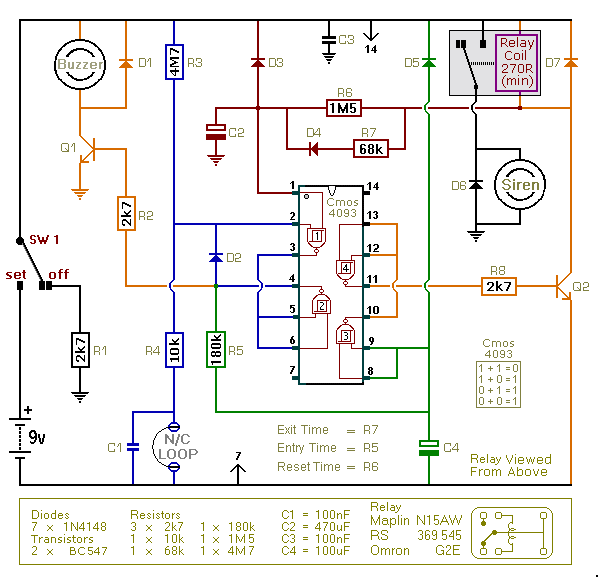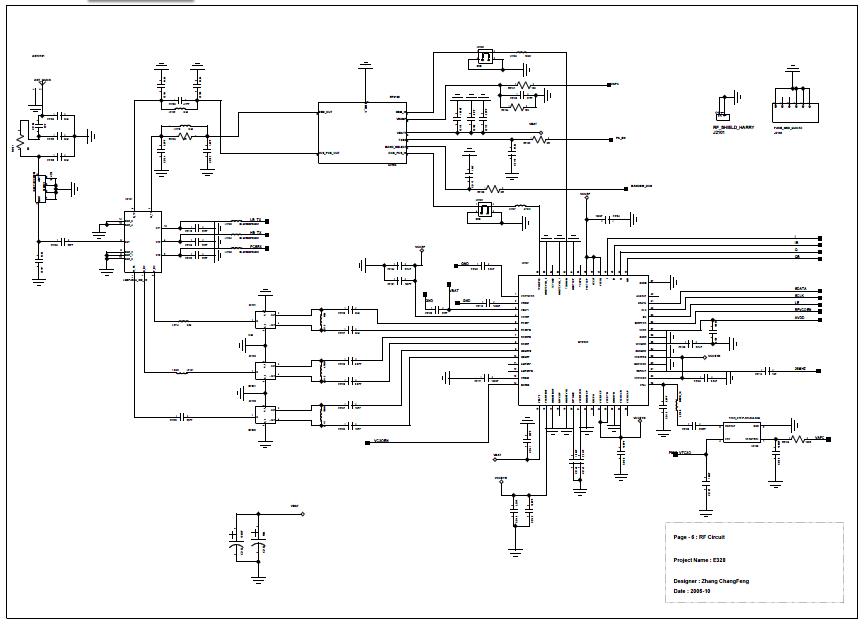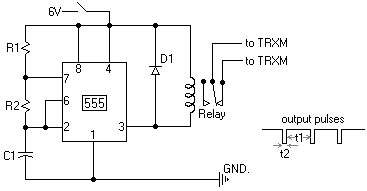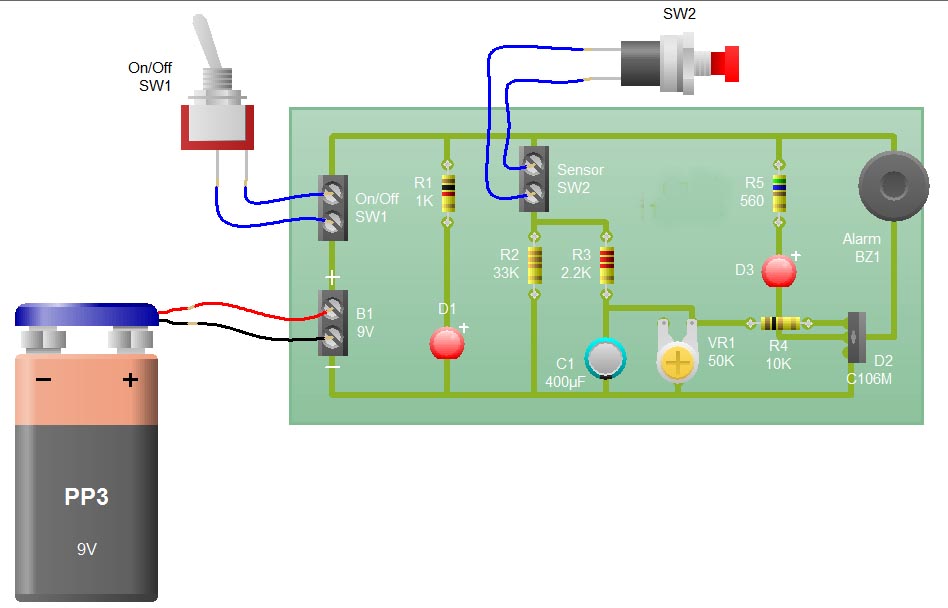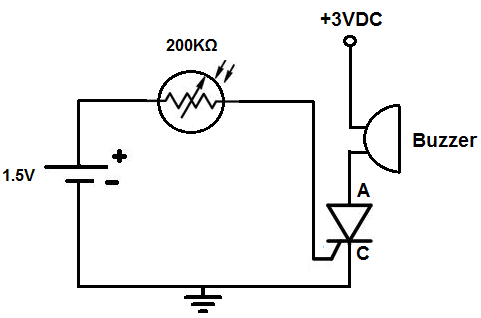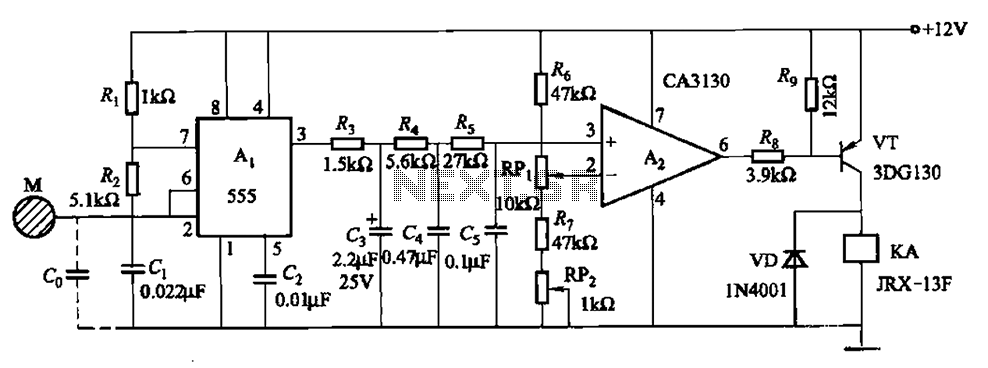
Fridge Door Alarm Schematic 2nd Version

The main purpose of this design is to address a minor flaw in the widely used Fridge Door Alarm circuit, which has been available on this website since 1999 and has been constructed by many hobbyists. This circuit ceases to function when the battery voltage drops below approximately 2.6 to 2.7 volts. This issue arises from the use of the 4060 CMOS IC. In some instances, devices manufactured by certain companies (excluding Motorola) fail to operate even at a nominal 3V supply voltage. A straightforward solution to this limitation is to replace the original specified IC with a 74HC4060 chip, which would enable circuit operation down to 2V; however, this IC is not readily available. Consequently, an equivalent circuit has been developed using a similar number of components to ensure reliable operation even when the battery voltage decreases to around 1.3V. The circuit, housed in a compact enclosure, should be positioned within the refrigerator, near the lamp (if present) or close to the opening. When the door is closed, the interior of the refrigerator remains dark, and the photoresistor R2 exhibits high resistance (greater than 200K), thereby keeping IC1 clamped by maintaining C1 fully charged across R1 and D1. When light enters through the opening or the refrigerator lamp is activated, the photoresistor's resistance drops (below 2K), interrupting the charging current for C1. As a result, IC1, configured as an astable multivibrator, begins oscillating at a very low frequency. After approximately 24 seconds, its output pin (#3) goes high, activating IC2. This chip is also configured as an astable multivibrator, causing the Piezo sounder to emit intermittent sounds at a rate of about five times per second. The alarm operates for approximately 17 seconds, followed by a pause of the same duration, and this cycle continues until the refrigerator door is closed.
The circuit design focuses on enhancing the reliability of the Fridge Door Alarm by utilizing a more efficient configuration that operates effectively at lower voltage levels. The core components include two integrated circuits (IC1 and IC2), a photoresistor (R2), a capacitor (C1), a resistor (R1), a diode (D1), and a Piezo sounder. The integration of the photoresistor serves as a light sensor, which is crucial in determining the status of the refrigerator door.
When the refrigerator door is closed, the light sensor remains inactive, allowing the capacitor to charge and stabilize the circuit. The astable multivibrator configuration of IC1 ensures that once the light is detected, the circuit transitions from a stable state to an oscillating state, which is critical for triggering the alarm system. The output from IC1 is connected to IC2, which also operates as an astable multivibrator, generating the sound output through the Piezo sounder.
The design emphasizes energy efficiency, ensuring that the alarm system can function effectively even with a diminishing battery supply. By utilizing components that are more readily available and simplifying the circuit design, this approach aims to provide a practical solution for hobbyists and users looking for a reliable refrigerator door alarm system that can withstand lower voltage conditions.The main purpose of this design was to obviate a small defect of the very popular Fridge Door Alarm circuit, available on this website since 1999 and built by a lot of hobbyists. Unfortunately, that circuit stops operating when the battery voltage falls below about 2. 6 - 2. 7 Volts. This is due to the 4060 CMos IC used. In some cases, devices made by some manufacturers (but not Motorola`s) fail to operate even at nominal 3V supply voltage. A simple cure to this shortcoming could be the substitution of the original IC specified with a 74HC4060 chip: this should allow circuit operation down to 2V but, unfortunately, this IC is not easy to locate. For this reason, an equivalent circuit using about the same parts counting was developed, in order to allow safe operation even when battery voltage falls down to about 1.
3V. The circuit, enclosed in a small box, should be placed in the fridge near the lamp (if any) or close to the opening. With the door closed, the interior of the fridge is in dark, the photo resistor R2 presents a high resistance (>200K) thus clamping IC1 by holding C1 fully charged across R1 and D1.
When a beam of light enters from the opening, or the fridge lamp lights, the photo resistor lowers its resistance (<2K) stopping C1 charging current. Therefore IC1, wired as an astable multivibrator, starts oscillating at a very low frequency and after a period of about 24 sec.
its output pin (#3) goes high, enabling IC2. This chip is also wired as an astable multivibrator, driving the Piezo sounder intermittently at about 5 times per second. The alarm is activated for about 17 sec. then stopped for the same time period and the cycle repeats until the fridge door closes. 🔗 External reference
The circuit design focuses on enhancing the reliability of the Fridge Door Alarm by utilizing a more efficient configuration that operates effectively at lower voltage levels. The core components include two integrated circuits (IC1 and IC2), a photoresistor (R2), a capacitor (C1), a resistor (R1), a diode (D1), and a Piezo sounder. The integration of the photoresistor serves as a light sensor, which is crucial in determining the status of the refrigerator door.
When the refrigerator door is closed, the light sensor remains inactive, allowing the capacitor to charge and stabilize the circuit. The astable multivibrator configuration of IC1 ensures that once the light is detected, the circuit transitions from a stable state to an oscillating state, which is critical for triggering the alarm system. The output from IC1 is connected to IC2, which also operates as an astable multivibrator, generating the sound output through the Piezo sounder.
The design emphasizes energy efficiency, ensuring that the alarm system can function effectively even with a diminishing battery supply. By utilizing components that are more readily available and simplifying the circuit design, this approach aims to provide a practical solution for hobbyists and users looking for a reliable refrigerator door alarm system that can withstand lower voltage conditions.The main purpose of this design was to obviate a small defect of the very popular Fridge Door Alarm circuit, available on this website since 1999 and built by a lot of hobbyists. Unfortunately, that circuit stops operating when the battery voltage falls below about 2. 6 - 2. 7 Volts. This is due to the 4060 CMos IC used. In some cases, devices made by some manufacturers (but not Motorola`s) fail to operate even at nominal 3V supply voltage. A simple cure to this shortcoming could be the substitution of the original IC specified with a 74HC4060 chip: this should allow circuit operation down to 2V but, unfortunately, this IC is not easy to locate. For this reason, an equivalent circuit using about the same parts counting was developed, in order to allow safe operation even when battery voltage falls down to about 1.
3V. The circuit, enclosed in a small box, should be placed in the fridge near the lamp (if any) or close to the opening. With the door closed, the interior of the fridge is in dark, the photo resistor R2 presents a high resistance (>200K) thus clamping IC1 by holding C1 fully charged across R1 and D1.
When a beam of light enters from the opening, or the fridge lamp lights, the photo resistor lowers its resistance (<2K) stopping C1 charging current. Therefore IC1, wired as an astable multivibrator, starts oscillating at a very low frequency and after a period of about 24 sec.
its output pin (#3) goes high, enabling IC2. This chip is also wired as an astable multivibrator, driving the Piezo sounder intermittently at about 5 times per second. The alarm is activated for about 17 sec. then stopped for the same time period and the cycle repeats until the fridge door closes. 🔗 External reference
